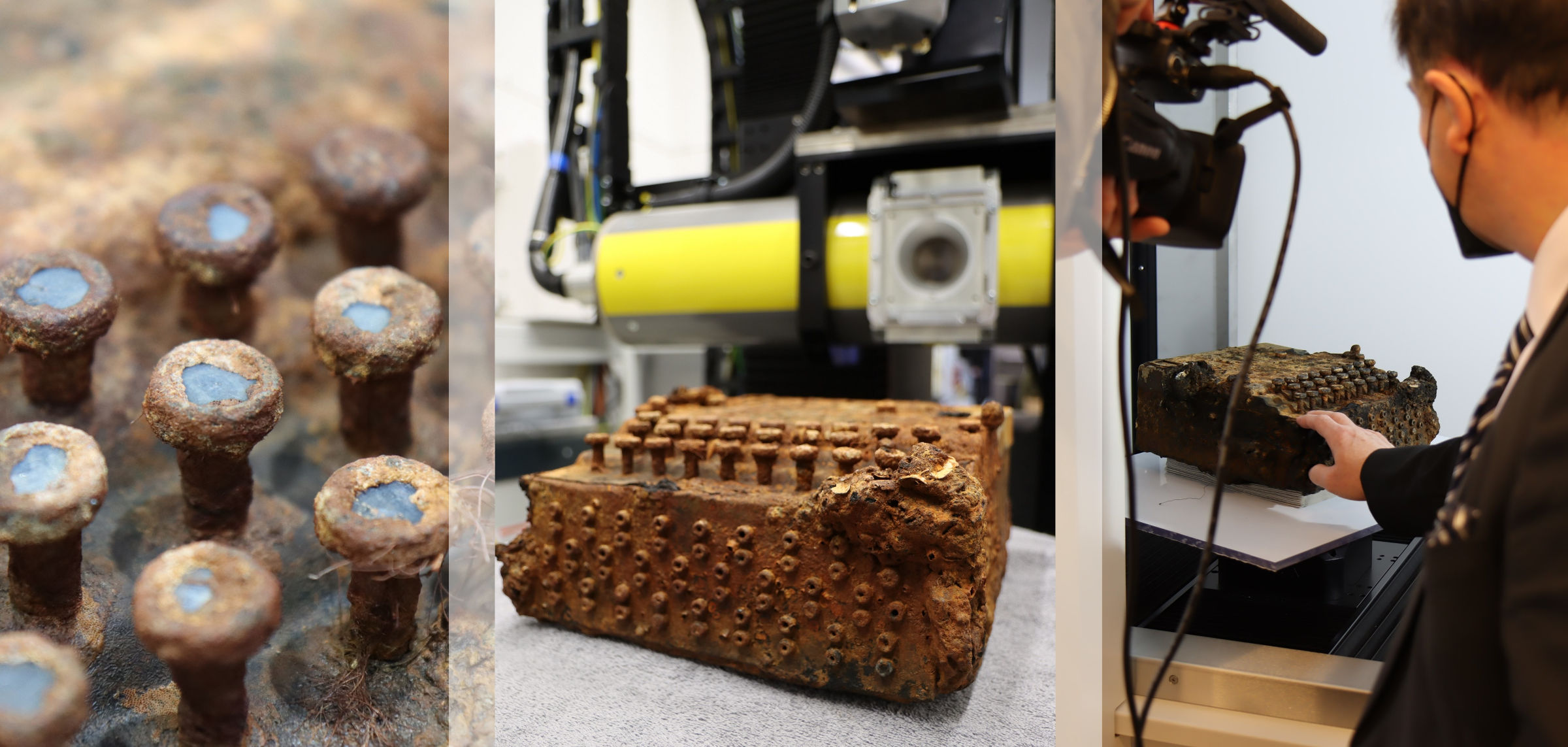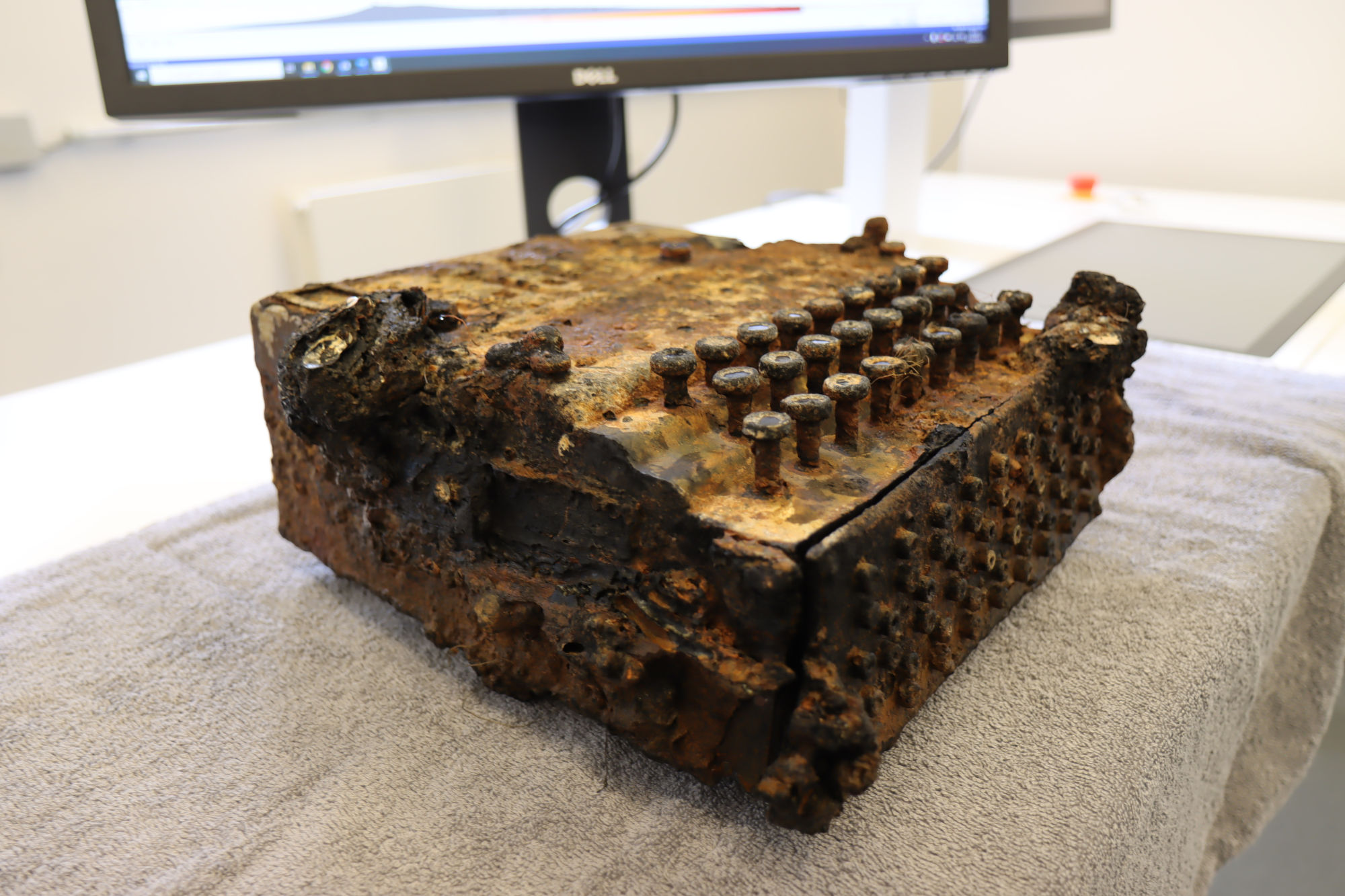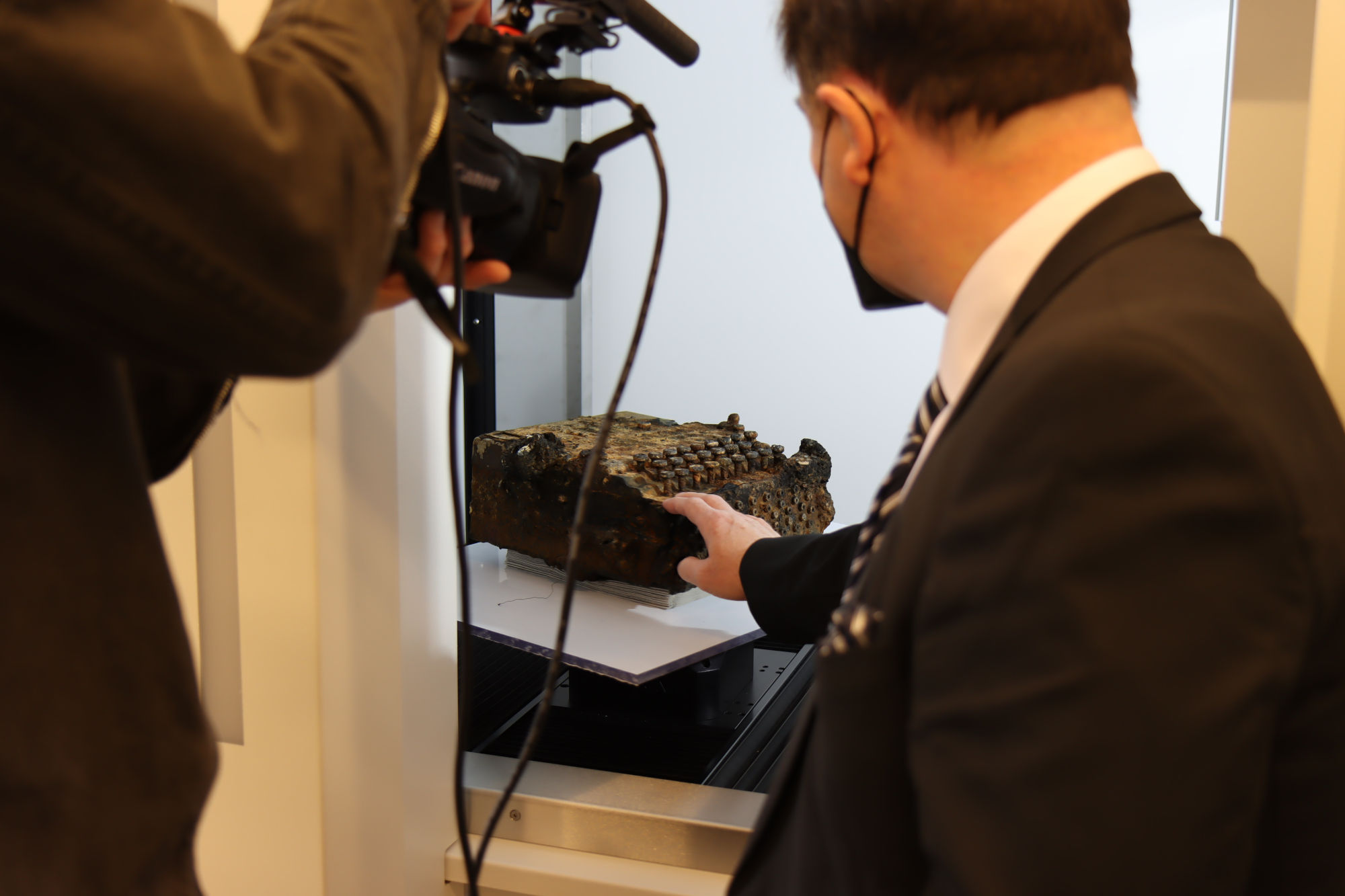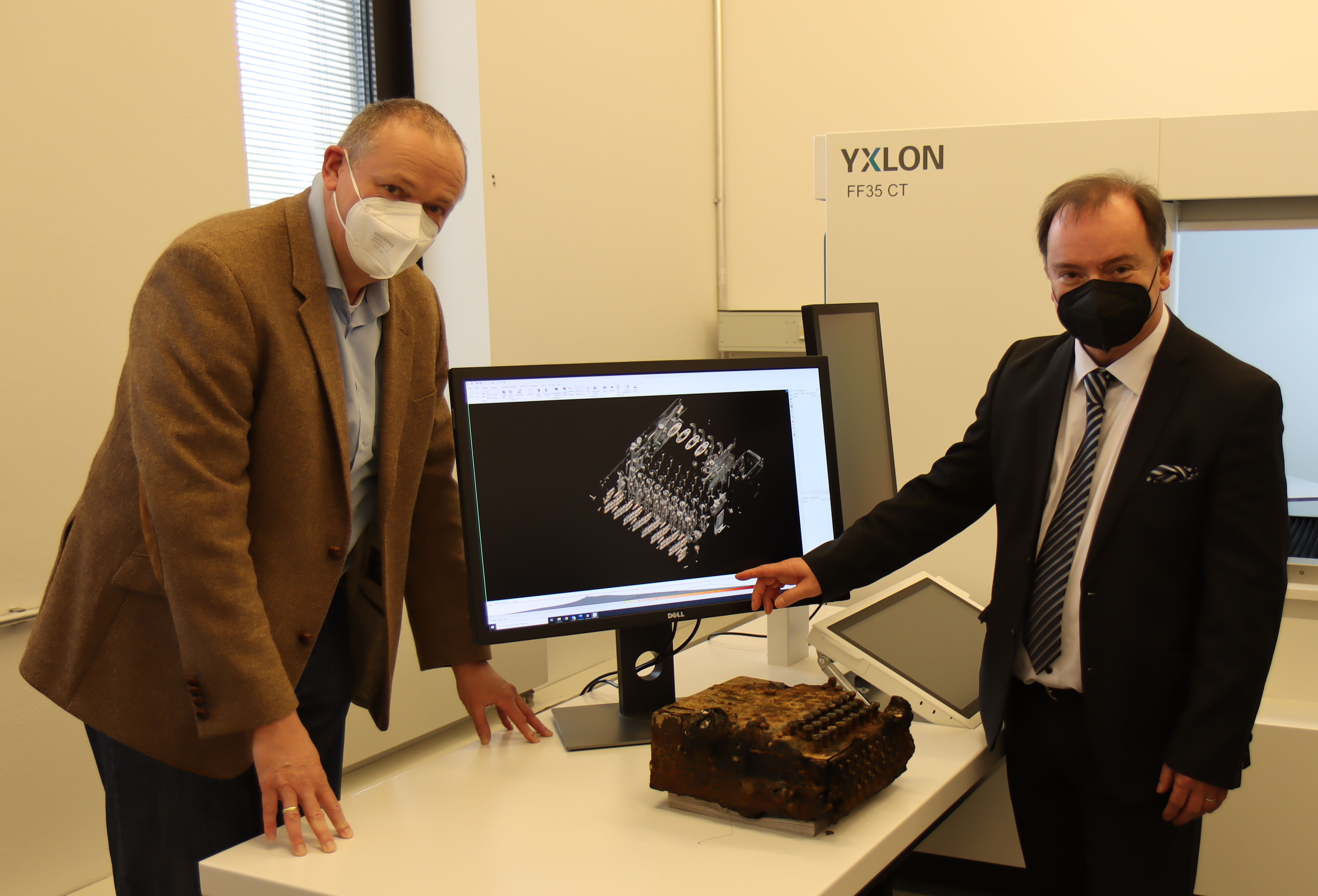Digital archiving of archeological finds
ENIGMA receives CT scans
In November 2020 and January 2021, a number of ENIGMA systems were found in the Baltic Sea and Schlei. These were purely accidental finds, as the research divers were actually pursuing other tasks - the recovery of ghost nets and a propeller. ENIGMA is the name given to the cipher machine used by the Germans before and during World War II. In a collaboration between the Schleswig-Holstein State Archaeological Office (ALSH) and the new Fraunhofer Research Institution for Individualized and Cell-Based Medical Engineering IMTE in Lübeck, these finds are now being made accessible to digital planning for restoration and long-term archiving through high-resolution computed tomography.
The ENIGMA was used to encrypt the Wehrmacht's message traffic during World War II. The fact that several specimens are now being examined in detail in Lübeck is a link to computer science, one of the main areas of research at the Lübeck BioMedTec Science Campus. It was one of the founding fathers of computer science and the leading figure of the British codebreakers in Bletchley Park, Alan Turing, who was finally able to decode the ENIGMA with his team.
At the end of the Second World War, these devices were immediately rendered useless in the event of imminent defeat and simply thrown overboard by the navy. The state of preservation of the devices now found in the Baltic Sea around the turn of the year is still unclear, however, because the silt of the Baltic Sea has filled every cavity of the devices compactly over the decades at the bottom of the Baltic Sea. Together with the salt water, however, this provided an extremely favorable environment for their preservation. The challenge now lies in their non-destructive restoration and research. Here, modern computed tomography can give a three-dimensional view of the interior, allowing archaeological conservators to navigate through the layers of silt.
Against this background, ALSH is cooperating with the new Fraunhofer Research Institution for Individualized and Cell-based Medical Engineering IMTE in Lübeck. Fraunhofer IMTE actually works in the field of integrated development of patient-specific solutions for diagnostic and therapeutic applications. This includes competencies in imaging, 3D printing and artificial intelligence, among others. In this cross-disciplinary project with archaeology, expertise in the areas of computed tomography, data science, and visualization play central roles.
"The digital archiving of ENIGMA is only the prelude to a longer-term cooperation between the two institutions," says Prof. Thorsten Buzug, Director of Fraunhofer IMTE. "The aim is to establish new methods and virtual display formats with other archaeological finds," because at the end of the day, archaeological forensics is technically very similar to medical diagnostics. "The ENIGMA devices are archaeological finds that are recorded, examined, researched and published by the Archaeological Office of Schleswig-Holstein in cooperation with the finders and experts", emphasizes the head of the ALSH, Dr. Ulf Ickerodt. "We are glad to have found a regional scientific partner in Fraunhofer IMTE, with whom the restoration of such finds can be better planned." The finds will then finally be restored and exhibited at the Stiftung Schleswig-Holsteinische Landesmuseen Schloss Gottorf.



